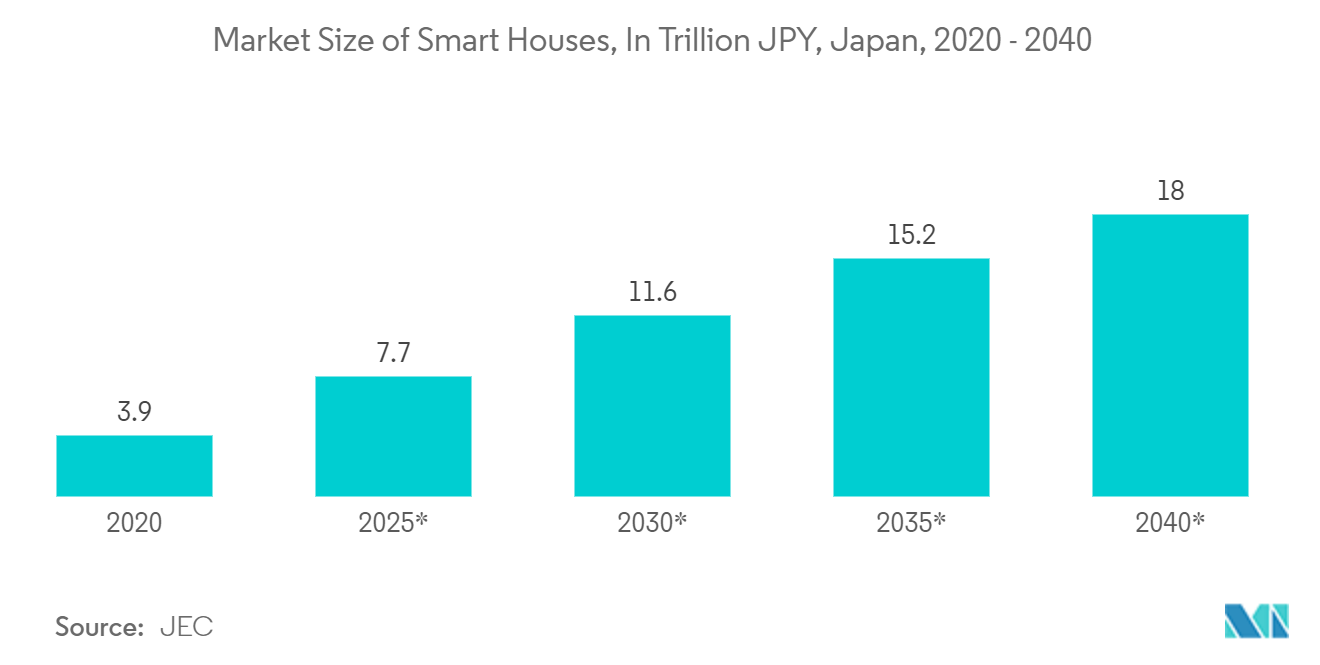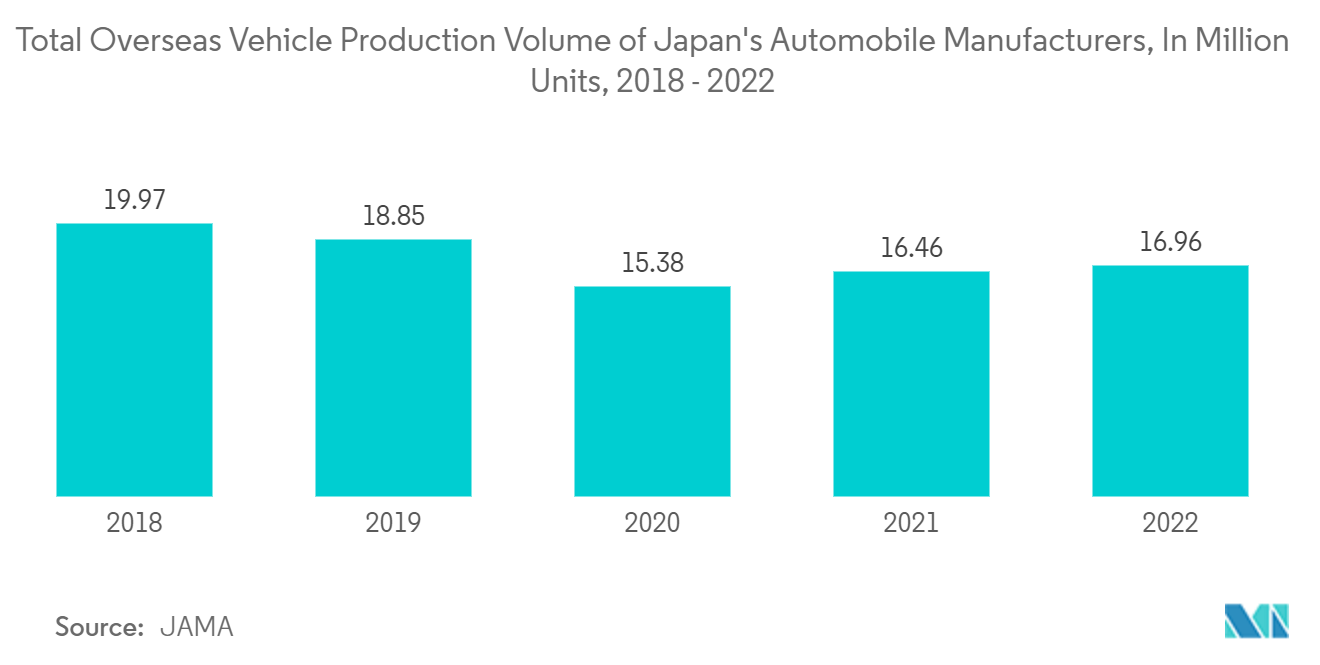Market Trends of Japan Semiconductor Diode Industry
LED is Expected to Hold Significant Market Share
- Energy demand is rising thanks to rapid urbanization and industrialization. Considerable opportunities exist to avoid locking in carbon-based energy technologies for the long term. Alongside its vast renewable energy potential, Japan already possesses significant knowledge and expertise in renewables. Illumination is one of the most fundamental driving forces toward development, facilitating trade, connectivity, safety, and education in a nation. To use energy more efficiently, Japan is undertaking LED revolution initiatives.
- The government in the country is becoming increasingly concerned about energy efficiency in the power sector. This is because the power sector is a significant contributor to greenhouse gas emissions that are responsible for causing climate change and other environmental problems. One of the main ways governments are addressing energy efficiency in the power sector is by encouraging the use of energy-efficient technologies and practices in the power sector, such as energy-efficient lighting systems.
- The growing need for highly efficient lighting systems with a minimum maintenance cost, ease in availability of LED lamps in various color lighting combinations, the increased average lifespan of LED lamps compared to conventional lamps, and its growing integration across multiple end-user segments is likely to drive its growth in the market. This is because, compared with fluorescent lighting technologies, LED lighting systems are much easier to integrate with smart controls to create intelligent and responsive living environments in homes, offices, and cities.
- In April 2022, Signify and DHL Supply Chain designed and implemented a smart lighting solution designed for warehouses. The companies piloted Signify's Interact Industry-connected lighting systems and managed services at a DHL Supply Chain Technology Sector site. Through the partnership, the company replaced DHL's traditional fluorescent T5 lamps with around 800 Day-Brite CFI FBY energy-efficient LED high-bay luminaires.
- Furthermore, in November 2022, Signify expanded its Smart Wi-Fi lighting range by launching two new portable smart lamps: Philips Smart LED Squire and Philips Smart LED Hero. The portable table lamps can be remotely operated from anywhere using the Philips WiZapp or through voice control. The lamps are also compatible with all smart home systems that work with the help of existing Wi-Fi networks.

Automotive is Expected to Drive the Market
- LED lights are also widely used as tail lamps for vehicles since they illuminate 0.2 seconds faster than incandescent lights and can help prevent an accident in the case of a sudden stop. The color exhibited by LED lights is also very beneficial to the driver. Unlike incandescent lights, LED lights emit more noticeable and vibrant colors, which, coupled with their quickness in being illuminated, helps ensure driver safety on the road.
- Moreover, LED lights offer better performance, are lighter, save space, and have many other benefits. Beyond just headlights and taillights, these lights are now making their way onto dashboards and rearview mirrors too. Also, the different stringent government rules around the country regarding using high-performance automotive lights create a positive growth outlook for the market.
- LiDAR has emerged as a critical 3D sensing technology, enabling autonomous driving systems and Advanced Driver Assistance Systems (ADAS). Pulsed laser diodes are used in amplitude-modulated LiDAR systems for automotive applications. Frequency-modulated continuous wave (FMCW) LiDAR is an emerging technology trend encompassing CW laser diodes and radar signal processing methods that deliver accurate information on object distance and velocity.
- Therefore, automotive LiDAR shipments are expected to increase considerably in the future. Compared to traditional ADAS sensors, LiDARs are less likely to provide missed or false alerts, making them much safer. According to Goldman Sachs, among all automobile component technologies, such as HMI, LiDAR, radar, cameras, V2X, mapping, embedded controls, etc., LiDAR is expected to offer the highest potential for automotive suppliers.
- Further, adopting laser diodes in the automotive environment involves satisfying high operation requirements from automotive manufacturers. For example, headlights incorporated with laser diodes must work at -40 to +80 degrees. They also need to prove their resistance to strong vibrations and high humidity. Such requirements are being addressed with the advancement of technology.

